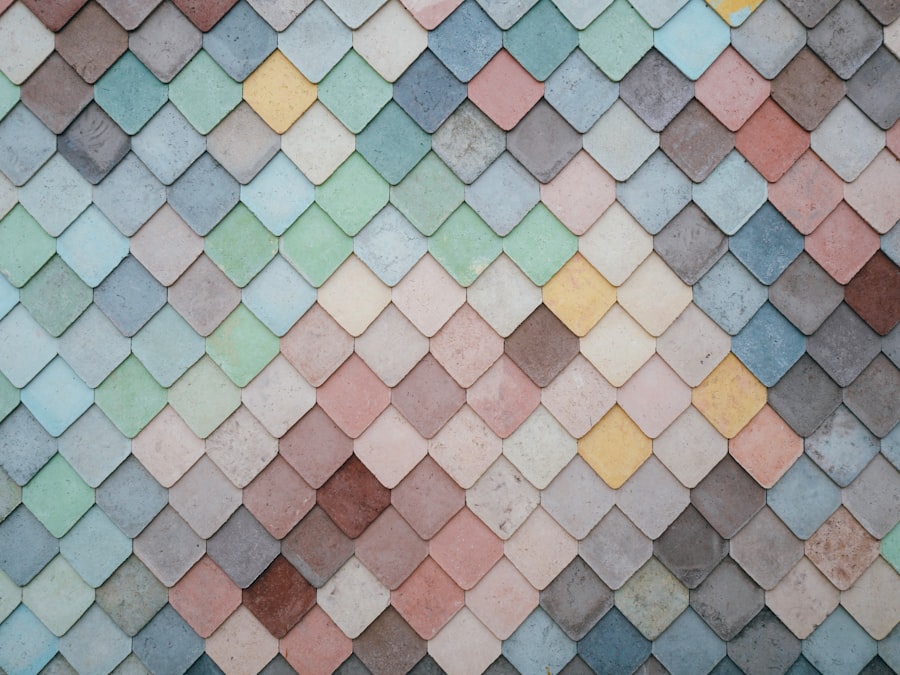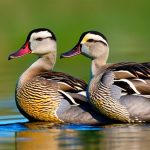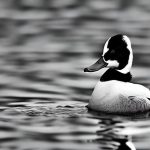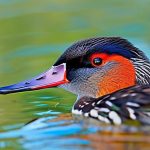Call Ducks are a popular breed among duck enthusiasts and breeders. They are known for their small size, adorable appearance, and distinctive vocalizations. Call Ducks have been bred for centuries, with the goal of achieving specific traits, including color. Breeding for color in Call Ducks is a complex process that requires an understanding of genetics and careful selection of breeding pairs.
Key Takeaways
- Call ducks are a small breed of domesticated duck that are popular for their unique appearance and friendly personalities.
- Understanding the genetics of call duck colors is important for breeders who want to produce specific color patterns in their ducks.
- There are several different color varieties of call ducks, including white, gray, black, and blue.
- Breeding for specific color patterns in call ducks requires careful selection of breeding stock and attention to factors like genetics and environment.
- Best practices for breeding call ducks for color include selecting healthy breeding stock, providing a suitable environment, and avoiding common mistakes like inbreeding.
Understanding the Genetics of Call Duck Colors
The color of Call Ducks is determined by genes that are passed down from their parents. These genes can be either dominant or recessive. Dominant genes are those that are more likely to be expressed in the offspring, while recessive genes are less likely to be expressed. In the case of Call Ducks, there are several different genes that determine color, including those for black, blue, chocolate, and silver.
The Different Color Varieties of Call Ducks
Call Ducks come in a variety of colors, each with its own unique characteristics. Some of the most common color varieties include:
– Mallard: This is the most common color variety for Call Ducks and closely resembles the wild Mallard duck. It has a brownish body with a green head and yellow bill.
– White: White Call Ducks have pure white feathers and a yellow bill. They are highly sought after for their striking appearance.
– Apricot: Apricot Call Ducks have a light orange or peach-colored body with a yellow bill. They are known for their soft and delicate appearance.
– Blue: Blue Call Ducks have a bluish-gray body with a lighter shade on their chest and belly. They have a blue bill.
– Chocolate: Chocolate Call Ducks have a dark brown body with a lighter shade on their chest and belly. They have a brown bill.
– Silver: Silver Call Ducks have a silver-gray body with a lighter shade on their chest and belly. They have a gray bill.
Breeding for Specific Color Patterns in Call Ducks
Breeding for specific color patterns in Call Ducks requires careful selection of breeding pairs. Breeders must choose ducks that have the desired color traits and breed them together to increase the likelihood of producing offspring with those traits. This process can take several generations to achieve the desired results.
To breed for specific color patterns, breeders must understand the genetics of color in Call Ducks. They must know which genes are responsible for producing certain colors and how those genes are inherited. By selecting ducks with the desired color traits and breeding them together, breeders can increase the chances of producing offspring with those traits.
Factors to Consider When Breeding Call Ducks for Color
When breeding Call Ducks for color, there are several factors that breeders must consider. One of the most important factors is the environment in which the ducks are raised. Environmental factors, such as temperature and lighting, can affect color development in ducks. It is important to provide a stable and optimal environment for breeding ducks to ensure that they develop the desired colors.
Proper nutrition and care are also crucial when breeding Call Ducks for color. Ducks need a balanced diet that includes all the necessary nutrients for healthy growth and development. Breeders should provide a high-quality feed that is specifically formulated for ducks and ensure that the ducks have access to clean water at all times.
Best Practices for Breeding Call Ducks for Color

To achieve success in breeding Call Ducks for color, breeders should follow some best practices. One important practice is to keep detailed records of breeding pairs and their offspring. This allows breeders to track the inheritance of color traits and make informed decisions about future breeding pairs.
Monitoring breeding pairs is also essential. Breeders should observe their ducks closely to ensure that they are healthy and exhibiting normal behavior. Any signs of illness or abnormal behavior should be addressed promptly to prevent the spread of disease or genetic disorders.
Maintaining genetic diversity is another important aspect of breeding Call Ducks for color. Inbreeding can lead to a loss of genetic diversity and increase the risk of genetic disorders. Breeders should introduce new bloodlines periodically to maintain a healthy and diverse breeding population.
Common Mistakes to Avoid When Breeding Call Ducks for Color
There are several common mistakes that breeders should avoid when breeding Call Ducks for color. One of the most common mistakes is inbreeding. Inbreeding can lead to a loss of genetic diversity and increase the risk of genetic disorders. Breeders should avoid breeding closely related ducks and instead introduce new bloodlines periodically.
Another common mistake is improper selection of breeding pairs. Breeders should choose ducks that have the desired color traits and breed them together to increase the likelihood of producing offspring with those traits. It is important to select ducks that are healthy, free from genetic disorders, and exhibit the desired color characteristics.
The Role of Environment in Call Duck Color Breeding
The environment plays a crucial role in Call Duck color breeding. Environmental factors, such as temperature and lighting, can affect color development in ducks. It is important to provide a stable and optimal environment for breeding ducks to ensure that they develop the desired colors.
Temperature can affect the expression of certain genes that determine color in Call Ducks. Extreme temperatures can cause stress in ducks, which can lead to changes in their coloration. It is important to provide a temperature-controlled environment for breeding ducks to minimize stress and ensure optimal color development.
Lighting is another important environmental factor in Call Duck color breeding. Ducks require a certain amount of light each day to maintain their normal biological functions, including color development. Providing the right amount and quality of light can help ensure that ducks develop the desired colors.
The Importance of Selecting Healthy Breeding Stock for Call Duck Color Breeding
Selecting healthy breeding stock is crucial when breeding Call Ducks for color. Healthy ducks are more likely to produce healthy offspring with the desired color traits. Breeders should carefully observe their ducks and look for signs of illness or abnormal behavior before selecting them as breeding stock.
It is also important to select ducks that are free from genetic disorders. Genetic disorders can be passed down to offspring and can negatively impact their health and color development. Breeders should be aware of any genetic disorders that are common in Call Ducks and avoid breeding ducks that carry those disorders.
Achieving Success in Breeding Call Ducks for Color
Breeding Call Ducks for color is a complex process that requires an understanding of genetics, careful selection of breeding pairs, and proper care and nutrition. By following best practices and avoiding common mistakes, breeders can increase their chances of achieving success in breeding Call Ducks with the desired color patterns.
Maintaining genetic diversity and providing an optimal breeding environment are key factors in achieving success in Call Duck color breeding. Breeders should continue their efforts in maintaining and improving Call Duck color patterns to preserve this unique breed for future generations. With dedication and careful breeding practices, breeders can continue to produce beautiful and healthy Call Ducks with a wide range of stunning colors.
If you’re interested in breeding call duck colors, you may also find this article on poultrywizard.com helpful: “How to Create the Perfect Environment for Breeding Call Duck Colors.” This article provides valuable insights and tips on creating the ideal conditions for breeding call ducks with vibrant and desirable colors. From understanding the importance of a spacious coop to selecting the right nesting boxes, this article covers all aspects of creating a successful breeding environment. Check it out here to enhance your knowledge and improve your breeding practices.
FAQs
What are call ducks?
Call ducks are a breed of domesticated duck that are smaller in size and have a distinctive high-pitched call.
What colors do call ducks come in?
Call ducks come in a variety of colors including white, gray, black, blue, fawn, apricot, and butterscotch.
How are call duck colors bred?
Call duck colors are bred through selective breeding. Breeders choose ducks with desirable color traits and breed them together to produce offspring with those same traits.
Can call duck colors be mixed?
Yes, call duck colors can be mixed through selective breeding. Breeders can choose to breed ducks with different color traits together to produce offspring with a unique combination of colors.
Are certain call duck colors more popular than others?
Yes, certain call duck colors are more popular than others. White and gray are two of the most popular colors, while butterscotch and apricot are less common.
Do call duck colors affect their behavior or health?
No, call duck colors do not affect their behavior or health. Color is purely a physical trait and has no impact on their overall well-being or personality.
Meet Walter, the feathered-friend fanatic of Florida! Nestled in the sunshine state, Walter struts through life with his feathered companions, clucking his way to happiness. With a coop that’s fancier than a five-star hotel, he’s the Don Juan of the chicken world. When he’s not teaching his hens to do the cha-cha, you’ll find him in a heated debate with his prized rooster, Sir Clucks-a-Lot. Walter’s poultry passion is no yolk; he’s the sunny-side-up guy you never knew you needed in your flock of friends!







